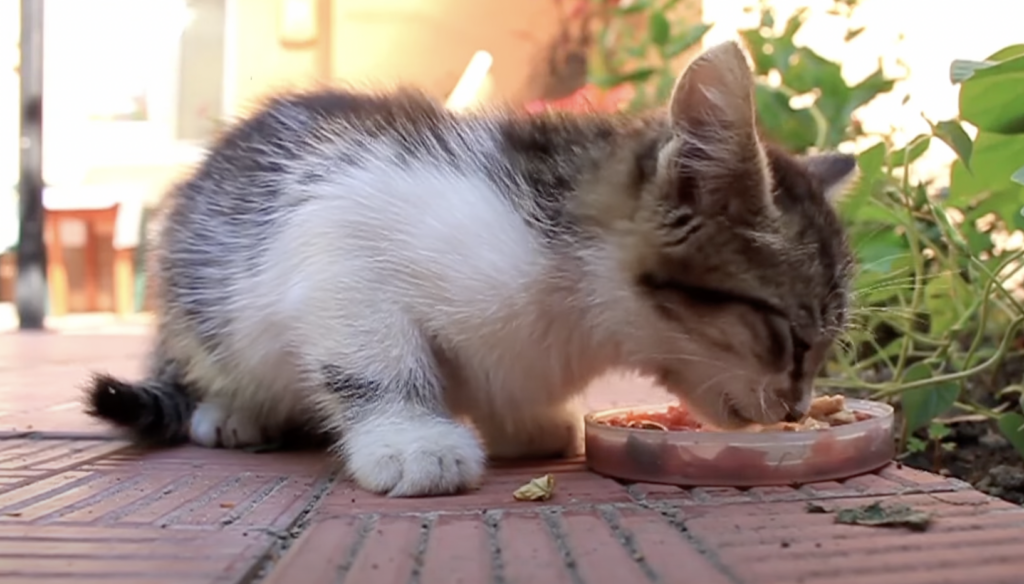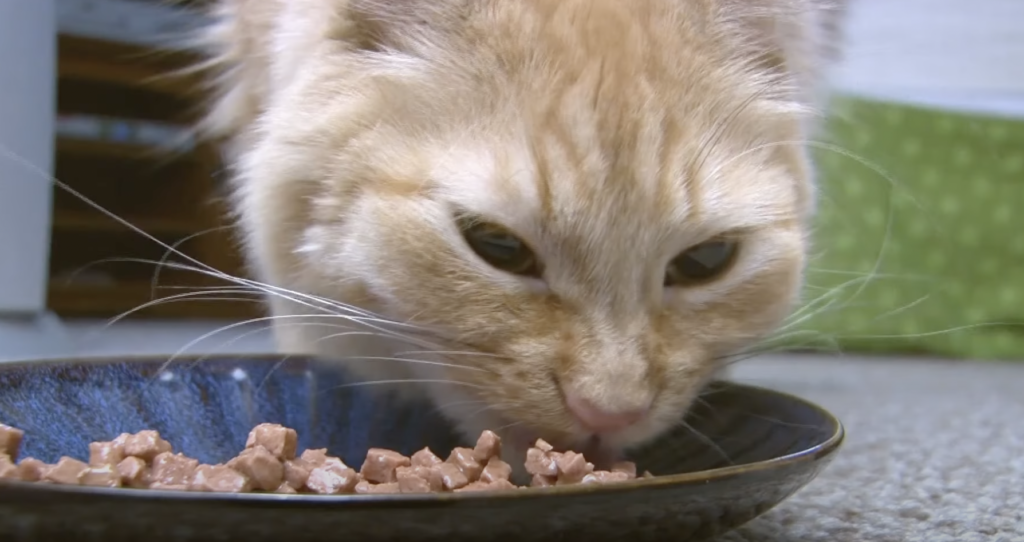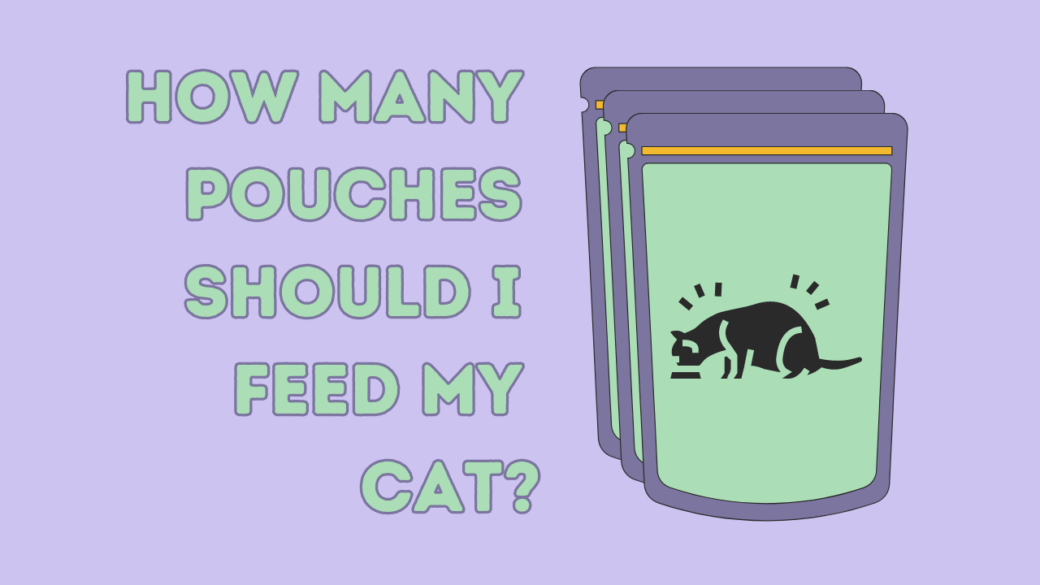Cat food pouches have become increasingly popular, and this is for a good reason. Many feline owners will know how fussy cats can be when it comes to food; this makes finding a nutritional diet, one that keeps them interested, a challenge. Thankfully, pouches of cat food seem to be a good dinner option for felines. But there is one question owners might find themselves asking – “How many pouches should I feed my cat?”
How much a cat eats can depend on several factors, such as age, weight, activity levels, and what food it is being given. This will vary from cat to cat as no one is the same; their needs vary, just as humans’ needs do, too. This article will provide a general overview of how many pouches to feed a cat, but this should be checked with the information listed on the cat food packaging.
If you have found yourself wondering how many pouches to feed your cat, then this article will educate you on the topic. It will hopefully help you to safely choose the right meals and amounts for your feline friend.
Table of Contents
How Many Wet Food Pouches Should You Feed Your Cat Daily?
For the most part, the feeding guidelines outlined in this article will relate to a cat’s age and ideal weight in different stages of life – kitten, adult, and senior. The amount of food each life stage requires will differ, with kittens requiring more food than adult and senior cats. This is to assist the healthy growth of young cats and provide them with more energy.
When owners serve wet foods, knowing how many pouches to feed a cat can be complicated. An estimated cat wet food guide for each life stage is provided below.
Kitten Feeding Guide
Due to fast growth in the first year of life, kittens need to eat more food for extra calories and energy. This is an essential part of a young cat’s diet, and pouches of wet food can provide the perfect diet for growing kittens.
On average, kittens require three to six pouches of kitten food per day split into multiple and frequent meals; this will vary depending on the brand of food. Between the ages of one and six months, a kitten should consume 250 to 400 calories per day. An older kitten between six and 12 months will need 40 to 45 calories per kilo of their body weight.
Whiskas recommend feeding kittens the following amounts:
- Less than three months old – 3 – 3.5 pouches
- Four to five months old – 3.5 – 4 pouches
- Six to 12 months old – 4 – 4.5 pouches
The amount of cat food a kitten receives should be decided using the feeding guidelines on the chosen food’s packaging. Brands’ instructions will vary, and a compromise should be met if changing the kitten’s food to a new food. This will often help owners determine a feeding schedule; to meet their grazing habits, kittens should be fed multiple times a day.

Adult Cat Feeding Guide
Most cats are referred to as adults when they are one year old. For some larger breeds, like Maine Coons and Ragdolls, this can be closer to 18 months or two years. At this time, the cat’s weight becomes more essential than age as it determines how much wet food an adult cat should be fed. One portion should contain about 315 to 500 calories.
Using Whiskas as an example again, the feeding guidelines are:
- Cats weighing 3kg – 3 – 3.5 pouches
- Cats weighing 4kg – 3.5 – 4 pouches
- Cats weighing 5kg – 4 – 4.5 pouches
In general, it is recommended to feed your adult cat between three to four pouches of food per day, split into two or three meals. This should also be noted on the chosen brand’s packaging.
Senior Cat Feeding Guide
Most cats can be considered seniors at the age of seven. But it is essential to try going by your cat’s age, weight, and body condition rather than their exact age. Older cats tend to become less active and may struggle to maintain their ideal body weight. As less active cats are at risk of gaining too much weight, appropriate high-quality food should be provided as per the feeding guidelines.
For elderly cats, two to four pouches a day is the recommended portion size. Owners should also look into the possibility of adding dietary fiber and omega-3 fatty acid supplements to their cat’s food. This will provide additional nutrients your pet needs, which are even more important if the cat is ill or recovering from an injury.
The pouch estimates shown below are for the Whiskas senior gravy pouches:
- Cats weighing 3kg – 3 – 3.5 pouches
- Cats weighing 4kg – 3.5 – 4 pouches
- Cats weighing 5kg – 4 – 4.5 pouches
However, there are some factors that can affect how much wet food a cat eats.
Factors Affecting How Many Pouches a Cat Should Eat
There are several things that can cause a cat to require more or less food.
Age
Age can affect the amount of food a cat eats. Kittens will eat more than adults and seniors due to their rapid growth. Growing is one of the biggest factors in a kitten’s diet; they are constantly getting bigger and changing as they progress from kittenhood into adulthood.
Because of this, kittens require a high-energy diet and more calories than adult cats. To meet their eating needs, many kitten owners decide to free-feed; it allows younger cats and kittens to eat as much as they want. However, this can be difficult to monitor if you have other cats or animals in the house.
Adult cats eat consistently throughout this stage of their lives. When cats become seniors, the amount of food owners provide during mealtimes will change because they become less active.
Weight
Most wet cat food brands’ feeding guidelines are optimised for the cat’s ideal weight. Weight is also often linked to age. As a cat grows and becomes an adult, it will weigh more. This weight can fluctuate as it gets older and becomes less active, which means it can be tougher to offer occasional treats.
To help a cat lose weight, monitoring its food intake is vital. Cats will graze at food throughout the day, so it can be easy for cat owners to overfeed. The amount of food offered can be decreased slightly to allow a calorie deficit, but vets should be consulted before doing this.

Activity Levels
The amount of energy a cat burns depends on how active it is. Most often, adult cats require enough food and calories to maintain their ordinary activities. More active cats, usually younger cats, will require more food to keep up with their levels of exercise.
Their activity levels are sometimes related to whether or not they have access to the outdoors.
Indoor or Outdoor Access
There will also be differences in the feeding amounts of indoor and outdoor cats. As outdoor cats are believed to be more active than indoor cats, they can require more energy from food, but they also have the opportunity to hunt and seek out other houses for food.
Similarly, an indoor cat might be overfed due to boredom. Either way, it is crucial to keep an eye on what your cat is eating, especially if you own more than one cat.
Food Brand
Another aspect that can change the amount a cat should be fed is the brand of food given. The ideal cat food brand will offer the essential nutrients to stay healthy. Different brands will recommend different food quantities. For example, Household Pets has previously published an article on feeding cats Felix cat food, as shown here. However, this is likely to be different than what other brands, like Whiskas or Purina, instruct cat owners to feed their pets.
These feeding instructions will also differ if a cat receives both wet and dry food. Although a lot of cats prefer wet food, dry food does have its benefits, such as helping with dental care. Most brands offer guidance on feeding a mixture of dry cat food and wet cat food on product packaging.
To Sum Up
Knowing how many pouches of wet food to feed a cat is an essential part of being a cat parent. This will heavily depend on the life stage of the cat, whether it is a kitten, adult, or senior, as well as other aspects of the cat’s life. As a general rule, kittens will need more food than adults and seniors.
Of course, the feeding recommendations in this article should be used only as guidance. For guidelines tailored to your cat, check the back of the food packaging or contact your local vet.

